Overview
- Introduction
- Reflecting on Changing Circumstances in the Beyblade Community
- What makes Beyblade and the community meaningful to me?
- My Experience With the Japanese Beyblade Community in 2020
- Declining Motivation to Test
- The Importance of a Competitive Framework
- Beyblade Burnout
- The Act of Preparation
- Connections are Crucial
- Perception of Beyblade in Japan
- Participating in my First G3 Beyblade Tournament
- Attending my First World Hobby Fair & G1 Tournament
- Discussion with WARIBEY Member Tatsuki After G1
- The Link Between Belief and Success
- Random Booster Tournaments in Japan
- Continual Change & Challenge
- Desire for “More”
- Photo Gallery
Affiliate Disclosure: If you buy something through some of the links on this post, you won’t pay any extra, but we’ll get a small commission. This helps us keep things running. Thanks for your support!
Introduction
On March 9th, 2020 I returned from a two and a half month long trip to Japan. I’ve visited every year since 2015. Those of you who have been around in the community for a while may be familiar with the reports I wrote for 2015, 2016, and 2017 on worldbeyblade.org and 2023 here on BeyBase.
- Part 5 – January to December 2023
- Part 3 – November 2017
- Part 2 – April 2016
- Part 1 – November/December 2015
In those reports, a large component was reporting on what specific combinations and matches I observed at each event I attended in Japan.
In this report, I cover parts of my 2019/2020 trip as well as a little from my trip in 2018, and reflect on some of the significant events in the Beyblade community for me over the past few years. But I do not dive as deeply into specific metagame related insights as I have in the past.
Reflecting on Changing Circumstances in the Beyblade Community
A lot has changed over the past few years; in my personal life, the Beyblade community, and the world at large.
Considering these things, I’d like to take this opportunity to instead craft a deeper reflection on the Beyblade community and the game itself within the context of my experiences in recent memory.
First, let’s take a step back to 2018.
In February 2018, I completed the publication of my “My Experience with the Japanese Beyblade Community – November 2017” report.
At the end of that report, I reflected on how much the game has impacted and positively affected me since playing in my first tournament in 2003, ending with the following:
“Passion I feel is rare in this world, so I’m thankful to have been able to find and maintain it in Beyblade for so long and more importantly, to have also met everyone that I have over the years. Thank you all!”
Reflecting on 2018
While it is difficult to fully summarize everything, it’s fair to say that business was proceeding as usual for both myself and the World Beyblade Organization back in 2018.
Tournaments were full-steam ahead as usual for me in Toronto and in other regions. Traditional community events like BeyDays, Beyblade Remembrance, contests, and the like were all upheld.
In fact, 2018 was arguably one of our best years in many respects. Beyblade Burst was exploding in popularity, leading to the record-setting Beytuber Brawl event with 172 participants (and BEYBLADE SHOGATSU 2019 in early 2019 with 166 participants).
We were also approaching an immense milestone: the World Beyblade Organization’s tenth anniversary.
Although 2018 did not pass without any hardship, my feeling looking back on 2018 is one of positivity and excitement. I feel like it was here that our desire to become bigger and better was almost at its peak.
In September and October 2018, I returned once again to Japan for the fourth year in a row.
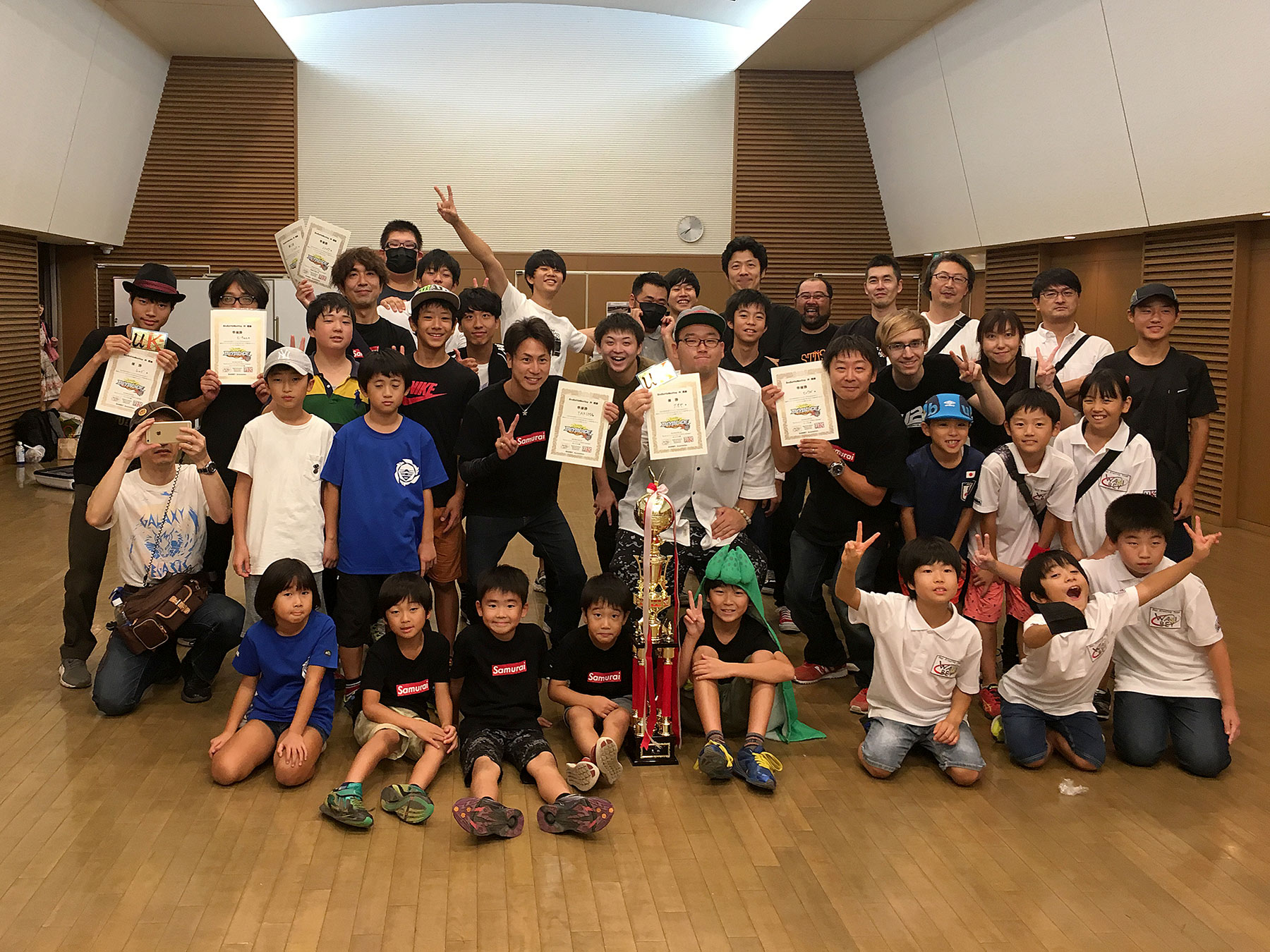
I attended many events throughout my six week stay, but the highlight was definitely the “WARIBEY Burst Cup 2018 Autumn” on October 7th, 2018 in Chiba. This was a tournament hosted by WARIBEY, but many different Beyblade teams from the Kanto region attended.
We played a variety of tournaments throughout the day. I ended up placing fourth in one of them which involved the finals being played in the MFB Tornado BeyStadium! We played five tournaments in total and each one made use of different tournament formats and stadiums. Was hard to prepare for that, but it was definitely fun!
Check out my footage below:
Reflecting on 2019
While the aforementioned Beytuber Brawl was a historic milestone for the WBO and something we should be happy about, it also raised the first of what would be many red flags.
I’ve talked about them before in my reports on BEYBLADE SHOGATSU 2019 and BEYBLADE NORTH 2019, but effectively what it did was force us to begin facing the realities of what we are capable of as a purely volunteer-based organization logistically and financially.
However, I don’t believe these realities were fully understood until planning for the international WBO X Championship (which was ultimately postponed) began in earnest behind the scenes.
It was around this time that other concerns or restrictions began to mount or be imposed upon us which threatened our ability to function as we had in the past. Some of which we are still seeking to resolve to this day.
For much of 2019, stress about our future began to mount for me. I took the stance that we should be rethinking who we are and what we can do most effectively as the World Beyblade Organization on a fundamental level.
In many ways, I felt that we needed to clarify and narrow our purpose and implement a new vision to guide us moving forward. And for the last half of 2019, this is something we were working on behind the scenes. The fruits of this have yet to be detailed or implemented publicly, but it is something I hope we’ll be able to do in 2020.
However, it unfortunately hasn’t been a straightforward process. Ignoring the depth and complexity of the undertaking described above, there is certainly a component of the stress and changing circumstances in my personal life which have left me personally with less time and/or motivation to push things forward at a brisk pace.
I took the stance that we should be rethinking who we are and what we can do most effectively as the World Beyblade Organization on a fundamental level.
What makes Beyblade and the community meaningful to me?
My love for Beyblade and the community hasn’t subsided, but in tandem with rising questions internally about who we are and rising responsibilities associated with the WBO and in my personal life as of late I’ve begun to wonder: what is it precisely that makes the game and community meaningful to me? What is it that spurs me to take action and dedicate the necessary time to Beyblade?
These past few months I’ve lost the passion required to play at a high level and to push organizational initiatives forward. And I’m trying to understand why.
But I do have some ideas that came about through my latest trip to Japan. I’ll outline these ideas and also use the opportunity to walk through some of the highlights of the trip.

25 years. 4 generations. And we still don’t know: is Beyblade a sport? A toy?
I wrote a 100 page article to answer this question.

Sponsored: Order the newest Beyblades at malloftoys.com!
Heads up: If you buy something through Mall of Toys, you won’t pay any extra, but I’ll get a small commission. This helps me keep things running. Thanks for your support!
My Experience With the Japanese Beyblade Community in 2020
On each of my past trips to Japan, they were for between 2-6 weeks respectively. This latest trip I returned from in March 2020 spanned around 11 weeks, almost double the length of my previous longest trip to date.
What this meant was an increased opportunity to attend Beyblade events for a longer period of time. Naturally, I was excited about this.

On January 3rd, 2020 I participated in the first Beyblade tournaments of the year at Bunbuku Toys in Tokyo. We played four tournaments in total with the final one being comprised of the winners of the previous three.
This was my record in each tournament:
- 1st Tournament: 2nd Place (4-1)
- 2nd Tournament: 3rd Place (3-1)
- 3rd Tournament: Did Not Play
- Final Top 8 Tournament: 3rd Place (2-1)
It was really fun as we played exclusively using 3on3 Battle Format to start, followed by the brand new 5G Battle Format for the finals.
Check out my footage below:
Throughout each tournament, I focused heavily on offense. My 5G matches in the finals were the first I ever played using that format. Based on the few I played and the others I observed, it seemed clear to me that KOs probably shouldn’t be worth two points … most matches ended in 2-3 rounds.
A four round match was rare. And I don’t think I ever witnessed a five round match, which leads me to feel that the time spent trying to prepare for a 5G battle doesn’t really match the level of thought it requires because the chances are that you never even touch your fourth or fifth Beyblade, which can make them feel inconsequential.
If KOs were worth one point instead, their value would be increased because the number of matches reaching that stage would increase.
That being said, the two point KOs does indeed place a lot of pressure on you for those first couple rounds. It’s intense. So in that sense, it is good … in the end I suppose it depends on what you value.
Prior to this day, I spent a long time preparing for it thanks to a stadium Jumbo from WARIBEY lended me, mainly focusing on testing out the newly released Master Diabolos.

Declining Motivation to Test
After this however, my time and motivation to test decreased steadily.
Part of this is I think due to the pressure placed on myself living alone for the first time in my life (while also working nights). This and then having it continue as I have returned from Japan have definitely caused me to question how I spend my time with an even greater set of responsibilities set upon my shoulders than before; I’m not a child anymore.

But over time a few additional factors emerged:
Just prior to leaving for Japan, I started this blog: beybase.com. It started as an experiment, but I put a lot of time and thought into creating it and crafting the initial set of articles. I held (and continue to hold) myself to a high standard of quality and detail for anything published on BeyBase.
As something that is for now merely a labour of love, it quickly became clear to me after arriving in Japan that I wouldn’t be able to push it to become what I wanted it to be any time soon while also juggling my desires and responsibilities to the WBO as well as my personal and work life.
The Importance of a Competitive Framework
On February 8th after attending a handful of events in Japan, I wrote to some friends that I was starting to realize again just how important the WBO rankings and everything they represent are. Even though they might not be perfect right now, it’s become even clearer to me that playing within a system which can enable:
- Comparison of players over time
- Self-analysis of personal performance over time
Are both a big part of what makes playing Beyblade fun to me ultimately.

It’s something I touched upon in my “Top Lessons from 2019’s Most Competitive Beyblade Tournament (and How to Improve as a Player/Organizer)” report on the Beyblade West tournament a few months ago too.
“Competition of any kind exists within a mutually shared and acknowledged framework; if you deviate from that framework, the game and the results it produces inch closer towards meaninglessness.
The WBO itself is predicated on this; ranked tournaments follow specific rulesets because we want for it to be possible to compare the skill of players both locally and globally.”
Within something like this, every battle you play matters in a way beyond just the tournament you’re playing. Meaning is built into each battle and it builds over time.
While TAKARA-TOMY certainly has a set of rules and a competitive framework they employ in Japan, it doesn’t take seriously the potential of actually tracking individual players’ performance in a meaningful enough way.
They’ve thought about it on a rudimentary level when you look at what their Beyblade Burst app does with regards to awarding points to players who win events and badges for their profile … This was a definite step in the right direction, but as far as I know they have abandoned this practice over the past few years at G4 events.

Although they didn’t track wins and losses like the WBO does, I still think it’s cool that my tournament wins in Japan back in 2015 and 2016 are recorded on my BeyCloud profile. But they appear to have stopped doing that for new events. It’s unfortunate.
Beyblade Burnout
There’s absolutely nothing wrong with playing merely for fun outside of the context described above, but after an extended period of time doing so and with the increased frequency of competition available to me by being in Japan, it started to become slightly exhausting.
Going through this burnout phase caused me to realize the important role frequency plays in my love of the game too.
Beyond the universal truth that time away from anything you love will make you miss it inevitably, frequency of competitive play is hugely important to manage if you wish to play at a high level because it determines how much time you have to process previous events mentally and subsequently prepare for new upcoming events.
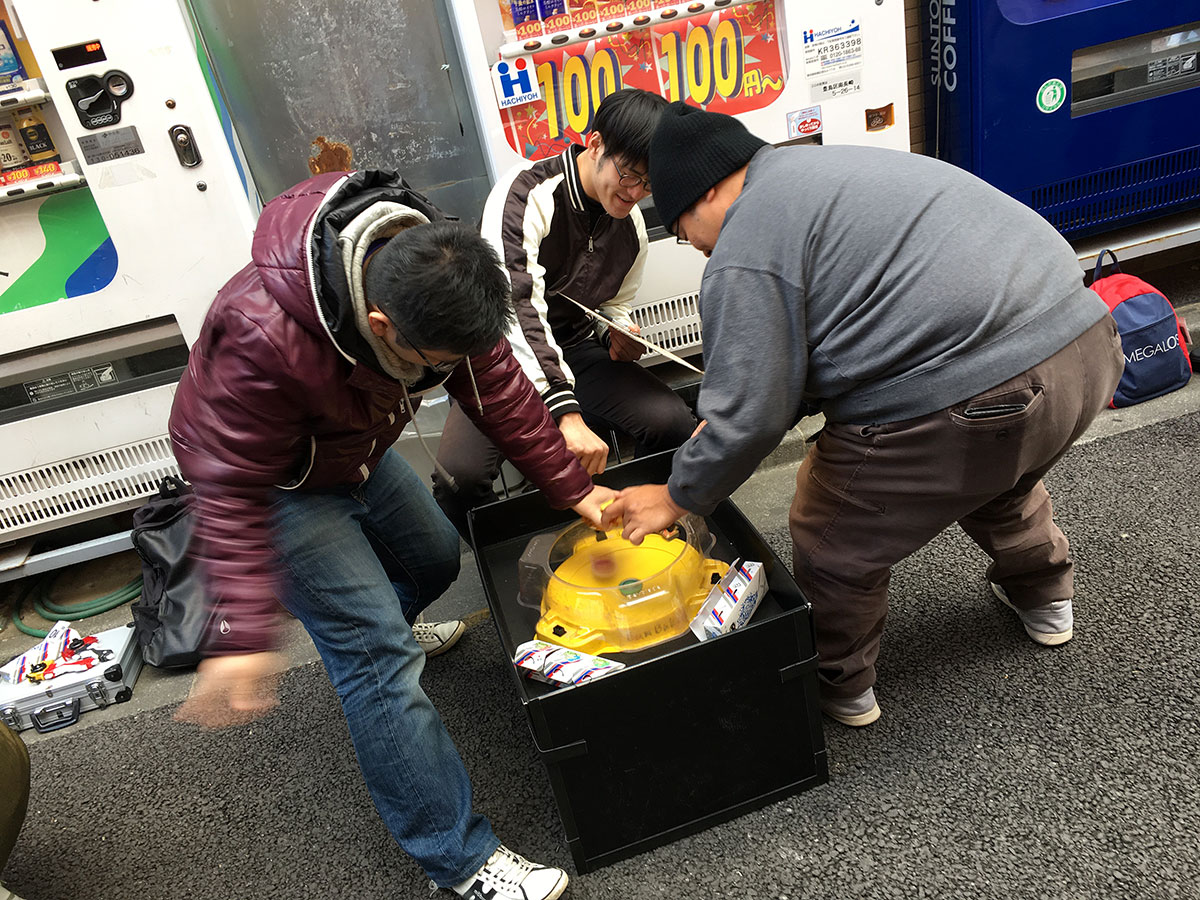
Tracking your performance as a player within the World Beyblade Organization is intrinsically linked with what makes preparation so engaging and fun.
I feel much more motivated to invest time in preparation when I feel that it is contributing towards something meaningful which exists in the context of a system evaluating performance beyond a single event.
Anyone can do well in a single event; it’s through the contextualization provided by a series of singular performances unified within in a ranking or performance tracking system that you can begin to uncover meaningful trends and comparisons to other players or insights about yourself.
The Act of Preparation
And ultimately, it is the act of preparation that makes Beyblade great. When you subtract that from the equation because it doesn’t feel meaningful, the game itself ceases to be meaningful as something worthy of significant investment of time and effort.
I’ve talked about this before in my The History of the WBO: 10th Anniversary Interview Series:
“Considering all of this, I guess in a broad sense what I love the most about Beyblade might be the preparation. All of the work you put in (or don’t put in) is represented the moment you launch your Beyblade. At that point, it’s out of your hands. That’s inherent to the design of the game. It’s what you do in the moments leading up to and including “3 .. 2 .. 1 .. Go Shoot!” that is the most interesting to me.”
We are all only as good as the amount of work that we put in prior to this moment.
Winning without preparation and/or deep understanding seems meaningless to a degree. Intuition and experience can take you a certain distance, but in a game which is always evolving–at least when a series like Beyblade Burst is still ongoing with new releases–this isn’t usually going to be good enough. Especially when someone else is putting in a greater effort than you over time and is able to make calculated, meaningful decisions based on the minutia of the current metagame.

Everyone is human, can make mistakes, and there is always an element of luck involved depending on the circumstances, but I know from personal experience that this is often the difference between winning and losing in Beyblade.
Connections are Crucial
That being said, the people you play with are also a crucial factor. After all, Beyblade is best played together with others!
I love everyone I’ve met in Japan and always look forward to seeing and hanging out with them, but there regardless is an ever-present language barrier. I’m working to knock it down through studying Japanese, but it’s still significant.
However, make no mistake: I still have always absolutely felt welcome (and am actually Canada’s only WARIBEY member)!
And arguably more important than framing competitive play with a framework of rules and progress tracking is building a community of people who love the game as much as you do. I’ve found this in the WBO and in Japan.

It’s not a stretch to say that most of my best friends have come through playing Beyblade.
Perception of Beyblade in Japan
One thing that has fascinated and challenged me over the years though is the differences in rules and approach to the game in Japan.
These differences are difficult to invest myself in heavily because of the language barrier, lack of rankings and progress tracking, and the limited amount of time I always have there. But they are fascinating nevertheless.
I’ll give some examples from my latest trip:
On December 29th, 2019–the day after I arrived in Japan–I happened to have a one day overlap with Bey Brad‘s (the founder of the WBO) trip in Japan, so we met up in Tokyo.
On that day I also went to LABI Shibuya and picked up several B-156 Random Booster Vol. 18 Naked Spriggan.Pr.Om Ten. I ended up pulling the gold turbo version of Naked Spriggan! I couldn’t believe it.

Later that night, I attended the WARIBEY year end party in Ueno. I’m not sure if every single member was present, but it was a big party.
A “game of chance”
I spoke with several of the older WARIBEY members, some of which have retired from Beyblade. Such as “keep”, who I’ve talked about and played against in my 2015 report.
He felt that Beyblade Burst feels like a “運ゲー” (game of chance) because of how difficult balance tuning is due to the burst mechanic.
keep talked about how he was the “mechanic” for his children when they were competing in the Asian Championships of the Metal Fight Beyblade era, so this is something that I think he and many others feel acutely.
I can especially understand his stance when you think about the early stages of Beyblade Burst when stamina was so utterly dominant (which is when keep was still active) and Burst Finishes ruining the orientation of your parts occurred more frequently.
But at this stage, my feeling is that things are much more even within the metagame due to the viability of attack types. Consequently, while balance tuning is still an important aspect to consider, the chances of participating in a pure stamina match up are lesser than before.
Speaking with Ryo, the 2012 Beyblade World Champion
I also had the great honour of being able to speak with Ryo, the 2012 Beyblade World Champion. He had previously attended the WBO x WARIBEY event I helped organize in 2016, but we never had a chance to speak then (and I honestly hadn’t recognized him!).
He’s stopped playing Beyblade and is in university now. He’s taken up tennis and road biking. And he can actually speak English pretty well!
I told him a bit about what the WBO does and he was happy to hear about how Beyblade is being played around the world. He expressed that he hopes I could be a bridge between the community in Japan and North America.

When he first started playing Beyblade, he went to a tournament and lost in the first round. It was experiences like this which made him feel that in order to become a champion, you need to experience loss.
In the year leading up to the 2012 World Championship, he travelled hundreds of kilometres to play in tournaments throughout Japan.
He played over 2000 battles in tournaments during that year. For some perspective, in the ten plus years of WBO tournaments I’ve played in, I currently “only” have 1,389 recorded ranked battles on my profile. With unranked tournaments, it might be around 1,500.
I don’t know how accurate his number of 2,000 is, but regardless, it demonstrates the immense level of dedication he had towards achieving success in the lead up to the championship. I wouldn’t doubt there were many other kids like this at the time too.
Two Approaches to Beyblade: Passionately or Technically
Among the few older members I spoke with–in broken English and Japanese, admittedly–there seemed to be two opposing views of how Beyblade should be approached: passionately or technically.
While I wasn’t able to get an exact definition of these two types of players, I would surmise that technical players focus deeply on things like balance tuning, part wear, and match-up analysis.
Passionate players on the other hand might place more emphasis on mastering techniques that make them better equipped to overcome unfavourable matchups. They might be more predisposed to using attack types or perfecting a steady and powerful launch technique for their stamina type.
But surely, any successful player does need a mix of both approaches in the long run.

Beyblade and Bushido
Interestingly, Ryo’s father mentioned at one point about how he connects Bushido–the “code of honour” or way of life for samurai–to Beyblade.
There’s a lot that I could infer about this, but suffice to say, given the importance of preparation especially to a game like Beyblade, it makes perfect sense to me that adopting “bushido” as a guiding principle could be beneficial.
One aspect of bushido is its emphasis on mental preparation; preparation reduces fear and promotes the ability for you to feel in control. When you feel in control–even when you are not entirely in control as is especially the case with Beyblade–there becomes little reason to doubt or question your choices in a tense situation. You’ve prepared for as many possible eventualities as you possibly can before the battle. If you still fail, you do so knowing that you did everything that you could.
When you feel in control–even when you are not entirely in control as is especially the case with Beyblade–there becomes little reason to doubt or question your choices in a tense situation.
There may be an unforeseen circumstance that impedes your ability to succeed, but it’s much easier to evaluate and accept that–and that alone–after the fact than it is to wonder what you did wrong if you enter a tournament with no preparation.
Participating in my First G3 Beyblade Tournament
A few weeks later on January 11, I traveled to Osaka and attended the WBBA G3 Tournament at Spa World. Up until this point, I had only ever participated in G4 tournaments in Japan, so I was quite excited for this!

Going into it however, I didn’t know precisely how it was going to work.
I wasn’t sure what the tournament format would be, what stadiums would be used, what the rules would be, and so forth. As a result, it was pretty hard to prepare for. I spent a lot of time thinking about the new 5G Battle Format as I thought it would be used for the finals, but I think they are reserving that for G1 events.
I found out not long before the event that the initial rounds would be played in the Burst Beystadium Wide Type. In retrospect, this wasn’t too surprising given the Japanese community’s propensity for playing 3-4 way matches under certain circumstances.
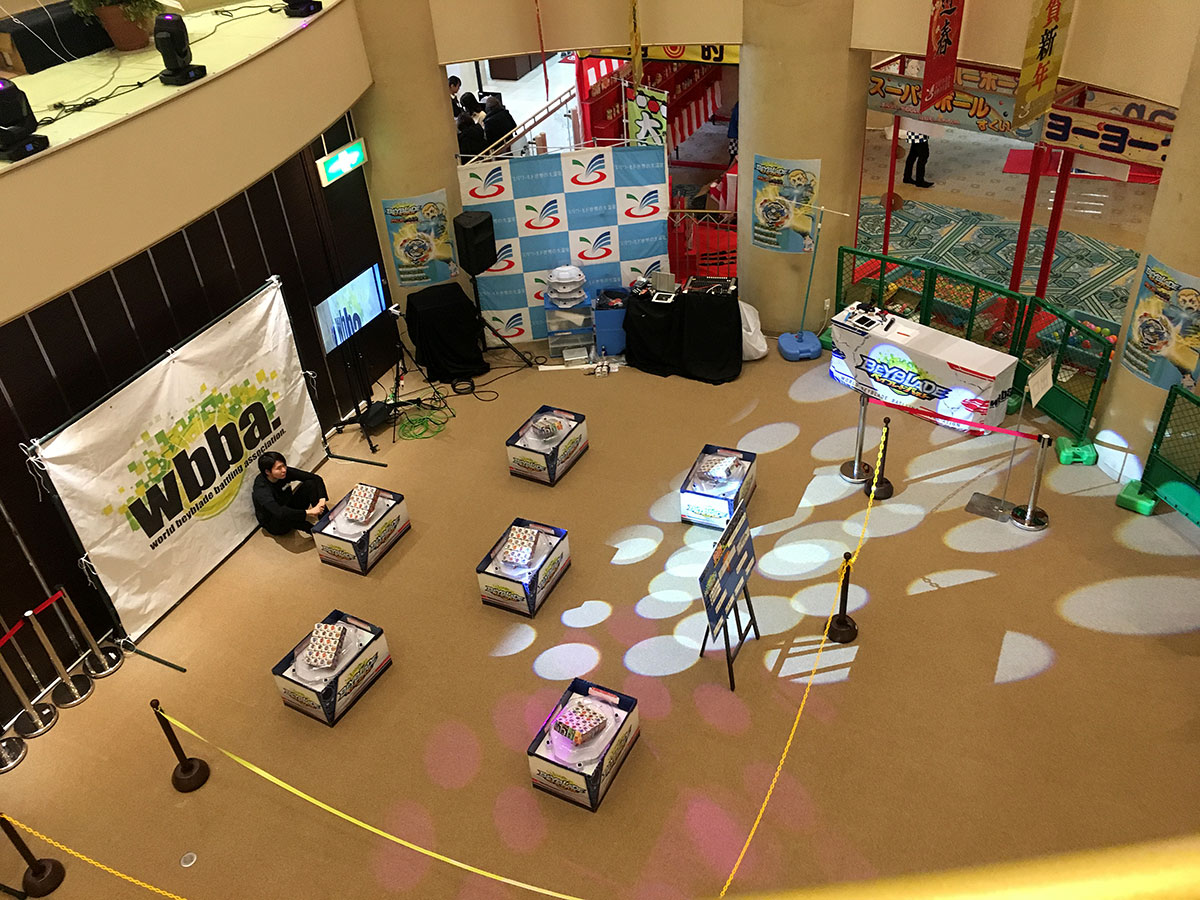
I’ve participated in these types of events twice: once at the WBO x WARIBEY tournament in 2016 where we played a tag team tournament in the MFB Wide Square Stadium, and once in 2018 at the WARIBEY Burst Cup 2018 Autumn.
This is a style of play that we’ve never really considered adopting for the WBO. Because of this I believe many players would be against the idea if it was presented. At first glance you might think “Isn’t it just random?” when you think about the increased number of variables presented by adding more players into the mix, but I think this is similar to the mistake people unfamiliar with Beyblade make when they think there is no strategy involved.
I won’t claim to be an expert in these types of battles by any stretch, but the Japanese Beyblade community certainly takes them extremely seriously.
While regular G4 events were always played in a regular 1v1 style, I observed them regularly practicing in the Wide Stadium too. Probably because in Japan, all G3, G2, and G1 events seem to start with this method for the first few rounds of an event to quickly reduce the field of players remaining. This is the reality they live in. In order to advance to the 1v1 stage, they need to master the ability to come out victorious in the group stage.

I believe that they take their launch techniques, part balance, and wear seriously and spend the time testing to ensure that their combination has the best possible chance of outspinning the opponents. In addition to Lord Bearing setups, Ignition’ and Hybrid Drivers were extremely popular in this stage on Perfect Phoenix and Hell Salamander. I’ll talk more about these Drivers later.
As someone relatively new to this style of tournament and play however, this was quite frustrating though. I lost in the first round using Lord on Xtend Plus. The battle was extremely close and I couldn’t comprehend clearly what I could have done better. I don’t have the expertise necessary for this style of play.
This exhibits clearly to me however that we should always be open to new styles of play; whether it’s the style you like the most or not is immaterial. What matters is that we always allow ourselves to be open to expanding our view of how the game can be played.

After the first few rounds of three-way battles, the finals were conducted using 3on3 Battle Format in the Cho-Z Musou Beystadium. This is yet again another example of how TAKARA-TOMY tests players’ strength in not only a single style of play, but in multiple styles.
I’m of the opinion that keeping the battle field and style of play relatively consistent from event to event is beneficial in terms of being able to compare players in a ranking system and in terms of players being able to properly and deeply prepare for events.
But I’m beginning to wonder if my view would have been different if I grew up playing Beyblade in Japan.
Check out my footage from the finals below:
After the tournament I was able to meet Blader Ken!
For those unfamiliar, Blader Ken has been hosting and judging at high grade WBBA events since early on in the Metal Fight Beyblade era. He was super nice. Apparently he didn’t know about the WBO at all, though … haha.

I also ran into mirai_beybladers from Instagram during the event! He’s from Nagoya, so I was surprised to see him there! His son has previously won a G1 event.

After accepting how little I knew about how to succeed in this type of environment, I decided it wasn’t worth it to come back the next day for the G2 tournament at Spa World and spend the time required signing up and covering the event for the possibility of playing in just one battle.
It’s too bad … I really wanted one of the gold/silver/bronze Launcher Grips or BeyLaunchers you win for placing within the top three!
I stayed in Osaka for about a week and then returned back to Tokyo.
Attending my First World Hobby Fair & G1 Tournament
On January 26th, 2020 I attended the World Hobby Fair Winter 2020 at Makuhari Messe in Tokyo. After five years of visiting Japan, this was the first time I was able to attend a WHF!

At the World Hobby Fair TAKARA-TOMY was hosting some of the first G1 tournaments of 2020, the highest grade of tournament in Japan. At each day and stop of the WHF, an AM and PM G1 tournament were held.
Regrettably, I woke up a bit late that day and wasn’t able to catch the AM tournament and opening rounds of the PM tournament … but when I arrived I learned that WARIBEY member Haruto had won the AM tournament!

Haruto has previously finished fourth place in the Beyblade Burst Japan National Championship 2018 (you can see him as Blader #8 in this video), and also won a G1 event once before. It was awesome to hear he had been able to win!
However, his journey wasn’t over yet. The winners of both the AM and PM tournaments were set to face off and determine the champion of the Sunday, January 26th G1 tournaments.
After this, the grand finals were held between the Sunday G1 champion and the Saturday G1 champion. The winner of this earned a ticket to the Beyblade Burst Japan National Championship 2020 where they will face off against the champions of other G1 tournaments from across the country.

All battles in the finals were played using 5G Battle Format.
Check out my footage below:
Unfortunately, Haruto ended up losing the match against the Sunday PM G1 champion. You can see the match starting at 9:05 in my footage above.
Meeting Blader Ken After the G1
After the grand finals on our way out of the venue, some members from WARIBEY were talking to Blader Ken and he noticed that I was there. Amazingly, he remembered my name and said “Oh! Hi Scott!” and shook my hand. He was confused at first as to why I was with them, but then I explained I was a member as well.
It was interesting seeing them speak to him. It’s clear that over the years they’ve built a bit of a relationship due to their involvement with competitive Beyblade in Japan (especially since WARIBEY member Ryo–who I mentioned earlier–was the 2012 World Champion).
You don’t really see this outside Japan; there’s no Hasbro employees who seem to have been involved with Beyblade for a decade or more and participate in a visible way in public events.

When I saw Blader Ken at the G3 in Osaka and this G1 in Tokyo, I got the impression that he was the authority and knew what he was talking about. He acted as a host and head judge at the G3, offering second opinions and clarifications when necessary. At the G1 he seemed to be working more behind the scenes on Beyblade Inspection before each and every match in the finals that I saw.
Having that type of figure involved in competitive play helps to lend it a higher level of legitimacy. When I think of the official Hasbro events I’ve attended in North America or the ones I’ve watched online, that simply does not exist.


Sponsored: Order the newest Beyblades at malloftoys.com!
Heads up: If you buy something through Mall of Toys, you won’t pay any extra, but I’ll get a small commission. This helps me keep things running. Thanks for your support!
The staff running events may be doing their best and the production is usually great, but I’ve never got the impression that they are intimately involved in or knowledgeable about the game competitively in the same way that people like Blader Ken are for major TAKARA-TOMY events. I don’t know for sure, but this is my impression.
Discussion with WARIBEY Member Tatsuki After G1
After leaving Makuhari Messe, some of us went out for dinner.
During dinner I spoke with Tatsuki. He is around my age. From what I understand he was a G1 champion during the Bakuten Shoot Beyblade generation. He also continues to play in G4 and WARIBEY events, including winning the WARIBEY Burst Cup 2018 Autumn.
He taught me some kanji like 飲料水 … but perhaps more relevant here is some of the Beyblade-related things we talked about!

This is the event exclusive blue Master Diabolos Sky Dragon Ver. that was released at the WHF, which Tatsuki picked up for me. Below it you can see a napkin we conducted our Japanese lesson on haha.
There was three main things we talked about:
1. Posting WBBA or WARIBEY events on the WBO
In trying to understand more about the WBO, he asked whether it was possible to post WBBA or WARIBEY events on the WBO.
This is a topic that I have actually been thinking about quite deeply as part of what I mentioned earlier about rethinking everything about who we are and what we can do as the World Beyblade Organization. The answer is currently “no”, but it won’t always be that way in the future. That’s a topic for another day, however.
2. Ignition’ and Hybrid Drivers, and Beyblade Part Wear in Japan
One of the ways in which players are able to differentiate themselves from others in the three-way battles I talked about earlier is through tip wear. With Ignition’ and Hybrid specifically, Tatsuki talked about how the taller the tip is, the less stable it is. If it’s shorter, it can spin for longer.
Additionally, he also said that they have been doing a lot of research into how the batteries used for them work so that they could better understand how it performs at different power levels.
It’s clear to me that Japanese players take part wear seriously, even with plastic parts. On the WBO, it seems wear is most often associated with things like rubber tips such as Xtreme because it is the type of wear which is quickest to occur and observe.
As we’ve seen over the years though, worn down parts like Bearing or Volcanic’ have also made waves in the Beyblade community. So much so that TAKARA-TOMY even had to implement wear guidelines for Beyblade Burst.
One other example I observed during my trip on several occasions was worn down Hold’ Drivers. They seemed to have quite good Life After Death and barely moved in comparison to a brand new Hold’. You can see a demonstration of what this performs like in this post on Instagram by virtuous.circle77.
What I’m not clear on however is exactly how they wear parts like this down … the amount of time needed to do it naturally seems insane. It may have something to do with the electric stadiums with rotating floors, but I’m not sure.

3. Beyblade Teams in Japan
He talked about how WARIBEY was basically the first Beyblade team in Japan. It was formed in the lead up to the very first World Championship in Tokyo in the early 2000s. In his opinion, a lot of the teams which have formed since then in Japan have tried to follow in their footsteps to a certain degree.
When you look at competitive Beyblade in Japan, it really has been defined by the existence of teams. While I’m sure unaffiliated players have won big tournaments before, I tend to have always seen members of teams being the players who win most big events.
When you look at competitive Beyblade in Japan, it really has been defined by the existence of teams.
It’s similar with the WBO. You tend to see that the people who win tournaments are those who are deeply engaged with the community locally or online. I think this demonstrates that making the effort to connect with others is the most important and meaningful aspect of playing Beyblade, and of anything worth dedicating yourself to really.

When you have a team like WARIBEY which has existed for close to two decades, a lot of interesting things begin to emerge. The connection between the members starts to feel very much like a family (and in some cases, they literally are!) and you have the previous generation like Tatsuki teaching the younger generation.
I witnessed this first hand after a G4 tournament when he was speaking with another younger player about how to prepare and conduct himself during the G1 tournament he was going to be attending the following weekend.
The Link Between Belief and Success
My feeling reflecting on this interaction is that it is only through belief that you can uncover what you seek and achieve the result you desire. As a player, obtaining such belief comes in two stages; both are intertwined.
The first relates to the journey outward. Assembling inspiration and making connections with the world, community, and players who inhabit it. The first example of this is Tatsuki teaching the young player how to prepare for the G1.
But it extends beyond this. This is also attending dozens and dozens of tournaments over the span of years. This is exchanging ideas with others. This is how you begin to comprehend the totality of the game you’re playing, your place in its world, what interests you, and what you desire.
It’s easy to observe from a detached perspective, but the lack of real engagement inevitably hinders you not only competitively, but emotionally. You can be interested in something this way, but I’m not sure if “passion” can truly grow without outward engagement.
The second is then of course the journey inward. For everything that we all do on a day-to-day basis improving ourselves and interacting with one another, when you approach the Beyblade stadium at a tournament, you are alone.

There is a judge beside you, your opponent is across from you, and you may be surrounded by spectators; but you are alone. No one can help you but yourself when it comes to making all of the decisions involved with a match.
It is here that you test what you have learned. Your belief (or lack thereof) is revealed in correspondence with the actions you take before, during, and after the match. Ultimately, each match is just as much an exercise in self-reflection and self-expression as it is a direct exchange of ideas and techniques with the opponent across from you.
The belief (or lack thereof) revealed throughout the course of each match you play is something which could only have been produced by progressing through both stages of the journey. And in fact, the journey itself is a cyclical one; as a player you place yourself in a never-ending feedback loop. The result of your outward journey influences your inward journey, and the results of your inward journey influence how you continue your outward journey.
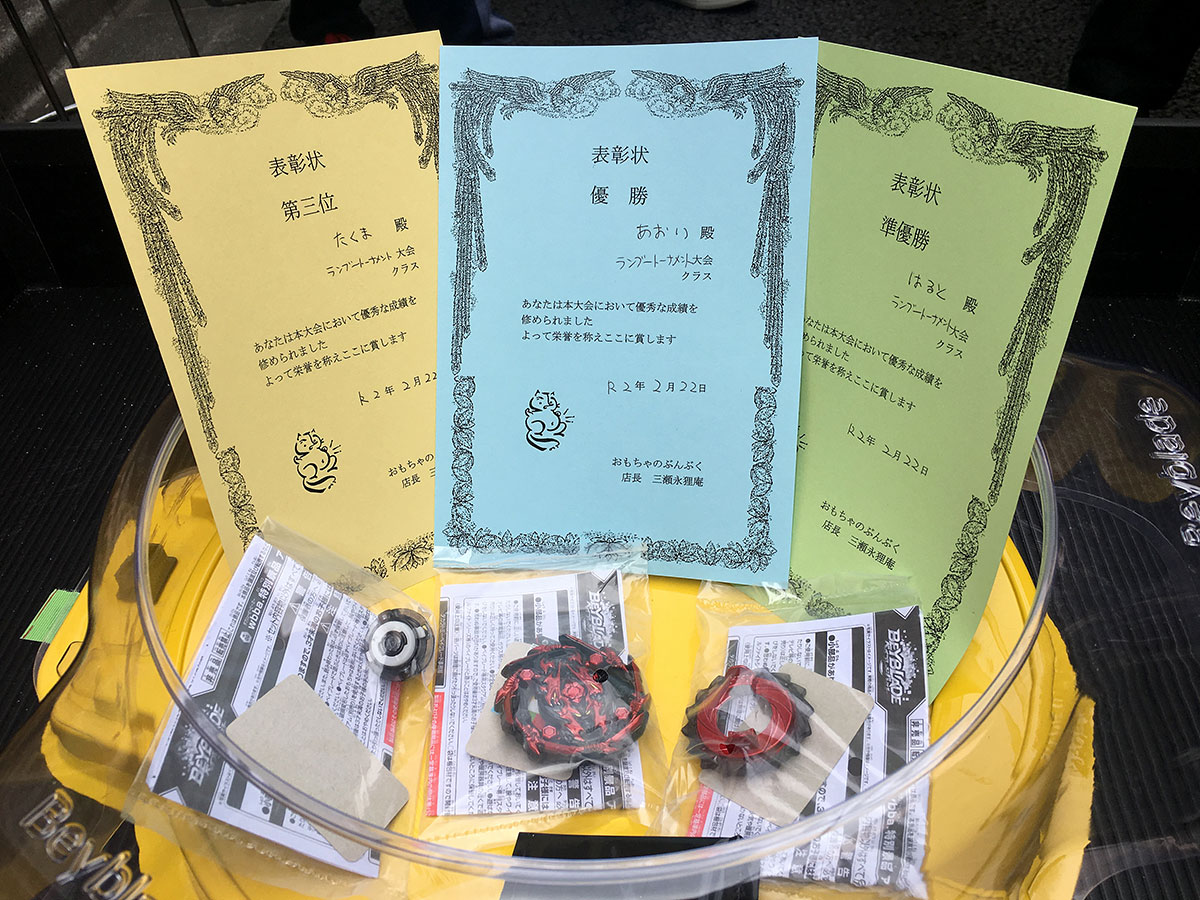
The future we desire is like the horizon. Seen, but impossible to truly reach. Yet, we must continue striving. We must continue engaging. To understand, to create, to connect. To believe.
And I think that’s what the best players of Beyblade do. Win or lose.
Random Booster Tournaments in Japan
To round out my 2020 trip to Japan, I attended three more events throughout February.
The last two included small “Random Booster” tournaments where each participant used the random Beyblade they pulled from a random booster, including one on the day B-158 Random Booster Vol. 19 Burn Phoenix.Y.Wd was released. Each one was pretty entertaining!
I pulled Rock Dragon 5 Jaggy’ Sou for the B-158 tournament. It was surprisingly decent (in the context of this event, of course), but I just barely lost 3-2 against Cho-Z Valkyrie 3 Guard.
There was a definite aspect of luck to it, but there was also something refreshing about it too because you were forced to work with what you had and adapt quickly. It was a good exercise.

Continual Change & Challenge
The Random Booster tournaments opened my eyes to yet another way of playing Beyblade. Despite having now played Beyblade for nearly 20 years, I still find myself being challenged to look at it differently. Both what the game and the community itself can be.
Before my eyes, both have continued to change alongside the world and myself.
Especially as of late, I have tried to remain conscious of and more open to this change. For many years, I was quite narrowly focused on the WBO’s existing way of doing things. This was certainly a boon in some ways, but in retrospect certainly also a detriment in other ways.

With challenge however, can come doubt. This is what I think I’ve been struggling with for some time now. Doubt as it relates to not my love of the game, but to:
- How Beyblade can and should be played
- What it means to me
- What the best path forward for the WBO is given the challenges presented to us over the past few years.
And at this moment, we are all facing the global challenge associated with COVID-19. My love for Beyblade still absolutely exists, but the uncertainty surrounding our future has made it difficult to find the motivation to invest myself in it.
Because there’s no tournaments and I can’t see the friends I normally play with, my desire to play has gone down. And because we can’t host tournaments for the foreseeable future–the WBO’s reason for existing–it’s hard to find the motivation to make improvements to the community.

I don’t say all of this to be depressing, but simply to be honest. This is the reality I and I’m sure many others are facing, at least with regards to the impact of COVID-19. I’m certain we will all get through this, but it is difficult right now.
The reason I wrote this article is due in large part to my desire to understand myself. But I also hope that it will offer insight into other parts of the Beyblade community not often observed in depth by players in the west and serve as an opportunity for others to reflect and admit to themselves if they are struggling.
If you don’t speak out and if you don’t take action, nothing will change.
Desire for “More”
When I first started playing Beyblade it was through the pure and innocent desire of a child. There were no systems, no responsibilities, and no relationships beyond those which existed immediately around me. I watched kids at recess playing and was naturally enthralled. I didn’t think so much about the “why”.

But even then I felt a desire for “more”. I wanted to attend tournaments. I eventually attended a tournament through YTV’s Weird on Wheels at the Canadian National Exhibition in 2003. That eventually evolved into tournaments through Beywiki and the WBO starting in 2008. And in 2015, I took the leap around the globe and started attending tournaments in Japan.
Since the beginning the context I’ve valued Beyblade within has always largely been based upon pushing myself to improve and to connecting with others.

Right now, it’s difficult to imagine what “more” will look like. It’s become difficult personally and societally to do the above.
Which brings me to question: how should it fit into my life from here? How will it fit into society at large from here?
These are questions that will continue to linger.
But despite this, I am determined to continue asking them. I am determined to face the future, whatever it will look like.
I hope you are too.
Photo Gallery
8 thoughts on “Beyblade in Japan 2020: In-Depth Report & Honest Reflection on Beyblade”
Comments are closed.


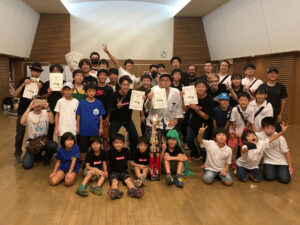


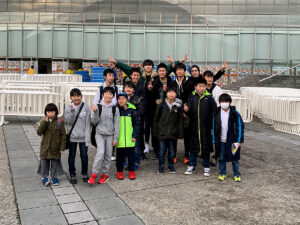
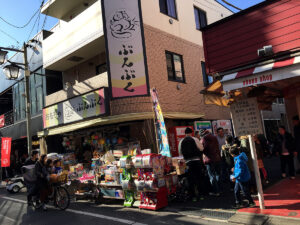





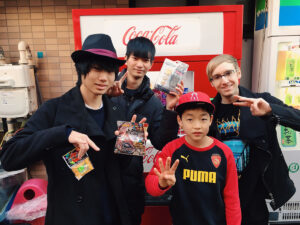






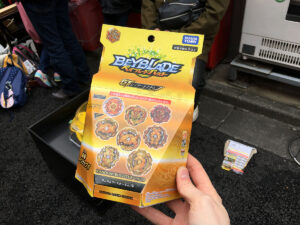



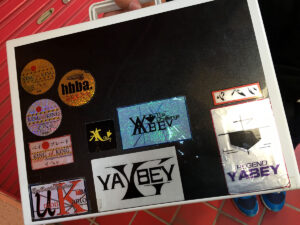








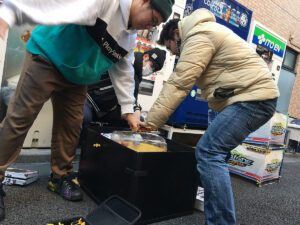





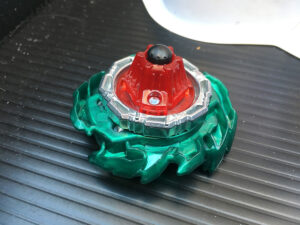

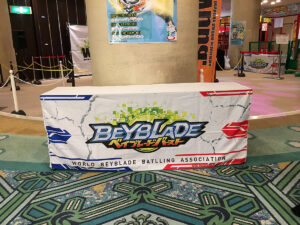






















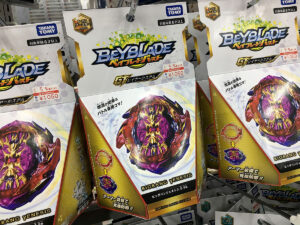




Great article man, as always 🙂
Thank you!
Amazing and insightful article. I’m a dad with a daughter who has just plunged into beyblade. Through a series of events with work and personal life I also have started learning hirigana. So now I have the desire to jump into beyblades as something to do with her and also get into the japanese culture as well with a planned trip in 2021.
I would definitely not be opposed to speaking with you about things that can be done to push the popularity and participation in wbo events in the future. Assuming the post saves the email address, feel free to contact me.
I love beyblade and more it is so cool and fun ok bye.
just wanted to say amazing article and articles on this site man. im 28 now with a son and he just got into beyblade not too long ago and he loves it as much as i did when i was a kid lol prolly even more. this site helped me find the tournaments in my state of florida and i think ill definitely be planning a trip to take him to one and see if he wants to compete to create some lasting memories. thanks for this website man its honestly brought back alot of good childhood memories and i really appreciate it!
Hello Jason, thanks for reading! That’s awesome to hear about your son. I don’t have one myself, but it’s amazing to hear over the past several years that things are starting to come full circle now with those who grew up with Beyblade and are now playing with their children. Hearing things like this makes me confident that Beyblade will be with us for a long time!
And I’m especially happy to hear that you were able to discover tournaments in Florida thanks to the site. The WBO community in Florida seems to be thriving lately, so you’re in a good spot!
Great article Kei! Very interesting to see what people consider their top 5. I’m surprised I wasn’t asked to help in my spare time I like to test a lot of combos. Sure my rank is 29 compared to everyone else who is somewhere above 20 in the rankings though late 2019-2020 was very good for me competitive wise though tbh I have no problem with your choice lol. Again a very great article if you ever do something with people contributing again I might be able to help.
Very nice article about your beyblade journey. I recently get into beyblade from the Burst series and now X by the influence of my 8 year old son. We joined a few G3 and G2 tournament together and even started a YouTube channel recording our plays.
Great fun